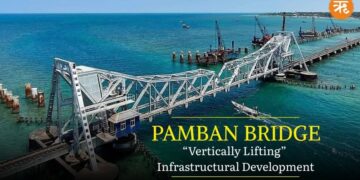Maharana Uday Singh II, born on August 4, 1522, in Chittor, Rajasthan, was the 53rd ruler of the Mewar dynasty. He was the son of King Rana Sanga and Queen Karnavati. Renowned as the founder of Udaipur, Uday Singh played a crucial role in resisting Mughal expansion in India. Before the famous conflict between his son, Maharana Pratap, and the Mughal ruler Akbar, Uday Singh initiated guerilla warfare against the Mughals, demonstrating his prowess as a skilled warrior and strategist. Uday Singh’s rise to power was significantly influenced by his foster mother, Panna Dhay, who protected him from assassins by sacrificing her own son. His reign marked a period of relentless struggle against the Mughals, and he continued to defend Mewar until his death on February 28, 1572. His legacy was carried forward by his son, Maharana Pratap, who became one of the most revered figures in Indian history for his resistance against Mughal rule.
Maharana Udai Singh was born on August 4, 1522 in Chittor, Rajasthan
– He was the son of Maharana Udai Singh
– Singh was the 53rd ruler of the Mewar dynasty
– Singh passed away on February 28, 1572
2. India’s first nuclear reactor, Apsara, was started on August 4, 1956. Not only was it the first nuclear reactor in India, but it was also the first in Asia. The decision to build this reactor was made on March 15, 1955, under the leadership of Homi Bhabha. Designed as a swimming pool reactor with a capacity of 1 megawatt thermal, an agreement was made with Britain to supply the required uranium. The reactor was constructed in just 15 months due to the tireless efforts of scientists across the country. Apsara was used for atomic energy research for several decades. It was temporarily closed for maintenance in 2009 and reopened in 2018, continuing its legacy as a pivotal component of India’s nuclear research infrastructure.
India’s first nuclear reactor was started on August 4, 1956
– It was named Apsara
– Apsara was not only India’s but also Asia’s first nuclear reactor
Kishore Kumar was born on August 4, 1929, in Khandwa, Madhya Pradesh. Known as Abhas Kumar Ganguly, he was a legendary singer and actor in Indian cinema. Music and art played a significant role in his family, influencing his career. Guided by his elder brother Ashok Kumar, Kishore Kumar started his career in Mumbai. Initially, he began as an actor, with his first film being “Shikari.” He soon ventured into singing, debuting with the song in the film “Ziddi.” Kishore Kumar’s unique singing style and versatility quickly established him as a leading figure in the Indian film industry. His contributions to music and cinema are celebrated to this day. Kishore Kumar passed away on October 13, 1987, leaving behind an enduring legacy.
Kishore Kumar was born on August 4, 1929 in Khandwa, Madhya Pradesh
– Kumar’s real name was Abhas Kumar Ganguly
– He was one of the most iconic singers and actors of Indian cinema
Barack Obama, born on August 4, 1961, in Honolulu, Hawaii, served as the 44th President of the United States and was the first African-American to hold this office. A member of the Democratic Party, Obama previously served as a US Senator representing Illinois from 2005 to 2008. He graduated from Columbia University and studied law at Harvard Law School, where he became the first African-American president of the Harvard Law Review. Obama won the US presidential election in 2008 and took office on January 20, 2009. He was re-elected in 2012 and served until January 20, 2017. His presidency is marked by significant events, including the elimination of Osama bin Laden, healthcare reform through the Affordable Care Act, and efforts towards economic recovery. His wife, Michelle Obama, is also a prominent public figure, and they have two daughters, Malia and Sasha.
Barack Obama was born on Augu…
[12:32, 8/5/2024] Tanushree (Office ): *Sushma Swaraj: A Trailblazer in Indian Politics*
Sushma Swaraj, a prominent BJP leader and former Foreign Minister of India, passed away on August 6, 2019. Beginning her political journey with Akhil Bharatiya Vidyarthi Parishad in 1970, she drew comparisons to former Prime Minister Atal Bihari Vajpayee. Serving as Foreign Minister from 2014 to 2019 under Narendra Modi’s first government, Swaraj was known for her dynamic leadership. Elected seven times as a Member of Parliament and three times as a Member of the Legislative Assembly, she made history in 1977 by becoming Haryana’s youngest cabinet minister at age 25. Swaraj was the first woman Chief Minister of Delhi, serving briefly in 1998, and was Leader of the Opposition in the 15th Lok Sabha from 2009. She passed away due to cardiac arrest and was posthumously awarded the Padma Vibhushan, India’s second-highest civilian award. Her tenure as Foreign Minister remains particularly memorable.
Today marks the death anniversary Former foreign minister and BJP leader Sushma Swaraj
– Her personality was similar to that of former Prime Minister Atal Bihari Vajpayee
– Sushma Swaraj was the Chief Minister of Delhi from October to December 1998
*Surendranath Banerjee: A Pioneer in the Indian Independence Movement*
Surendranath Banerjee, a prominent figure in the early Indian Independence Movement, passed away on August 6, 1925. Born on November 10, 1848, in Kolkata, Banerjee was the second Indian selected for the Indian Civil Service, although he was controversially dismissed from the service. He founded the Indian National Association, considered India’s first political party, which later merged with the Indian National Congress in 1885. Banerjee served as Congress President in 1895 and 1902. He was a significant leader during the 1905 partition of Bengal and mentored future leaders like Gopal Krishna Gokhale and Sarojini Naidu. Despite his contributions, Banerjee did not support the extremists’ political actions or Gandhi’s non-cooperation movement. Known as Rashtraguru, his legacy remains pivotal in India’s struggle for independence.
Surendranath Banerjee passed away on 6 August 1925
– Banerjee was the second Indian to be selected in the Indian Civil Service
– He was born on 10 November 1948 in Kolkata, is also known as Rashtraguru
*Bande Mataram: Voice of Indian Nationalism*
Bande Mataram, an influential English-language weekly newspaper, was launched on August 6, 1906, in Kolkata by Subodh Chandra Malik, Bipin Chandra Pal, and Deshbandhu Chittaranjan Das. Edited by Sri Aurobindo, its mission was to inspire Indians to fight for complete independence. As a powerful organ of Indian nationalism, it played a crucial role in the national movement, prompting the British to implement the Press Act of 1910, imposing strict censorship. Despite its significant impact, the British government shut down Bande Mataram in 1908 under The Newspaper Act of 1908.
Bande Mataram newspaper was started on 6 August, 1906
– It was an English language weekly newspaper published from Kolkata
– It was edited by Sri Aurobindo
*Devastating Flood in Ladakh: August 6, 2010*
On August 6, 2010, a catastrophic flood struck Ladakh, then part of Jammu and Kashmir, now a Union Territory. Triggered by a cloudburst around midnight, the flood ravaged 71 towns and villages, including Leh. The disaster claimed at least 255 lives, including six foreign tourists, while 200 people were reported missing initially. The flood left thousands homeless, and extensive damage was inflicted on property and infrastructure, affecting 9,000 people directly. Despite the severe impact, weather data recorded only 12.8 mm of rainfall that night. The flood highlighted the vulnerability of the region to sudden natural disasters.
On August 6, 2010, a devastating flood hit the Union Territory of Ladakh
– At least 255 people died in the flood
– A total of 9000 people were directly affected by the flood
*India’s First Test Tube Baby: August 6, 1986*
India’s first test tube baby, Harsha Chavda, was born on August 6, 1986, at 3:30 am in Jaslok Hospital, Mumbai. Mani Chavda, a 24-year-old woman facing difficulties in conceiving, opted for IVF technology. Dr. Indira Hinduja successfully created an embryo by mixing sperm and egg in the lab, which was then transferred to Mani’s uterus on November 30, 1985. A healthy pregnancy was confirmed on January 6, 1986, and Harsha was born later that year. Harsha Chavda, who became a mother herself in 2016, marked a significant milestone in India’s medical history.
India’s first test tube baby was born on August 6, 1986
– The baby was named Harsha
– In the year 2016, Harsha Chavda also gave birth to a son
*Hiroshima Bombing: August 6, 1945*
On August 6, 1945, the US dropped an atomic bomb named Little Boy on Hiroshima, Japan, obliterating the city in seconds and killing 80,000 people instantly. The attack aimed to force Japan’s surrender during World War II. The aftermath saw thousands more die from radiation effects and severe illnesses. This event, highlighting the devastating power of nuclear weapons, remains one of the most catastrophic in human history. Three days later, on August 9, a second atomic bomb was dropped on Nagasaki. Japan surrendered on August 15, 1945, officially ending World War II on September 2, 1945, with the signing of the surrender document.
On August 6, 1945, the US dropped an atomic bomb on the Japanese city of Hiroshima
– 80 thousand people died in this attack
– On August 9, 1945, the second atomic bomb was dropped on Nagasaki
















Comments